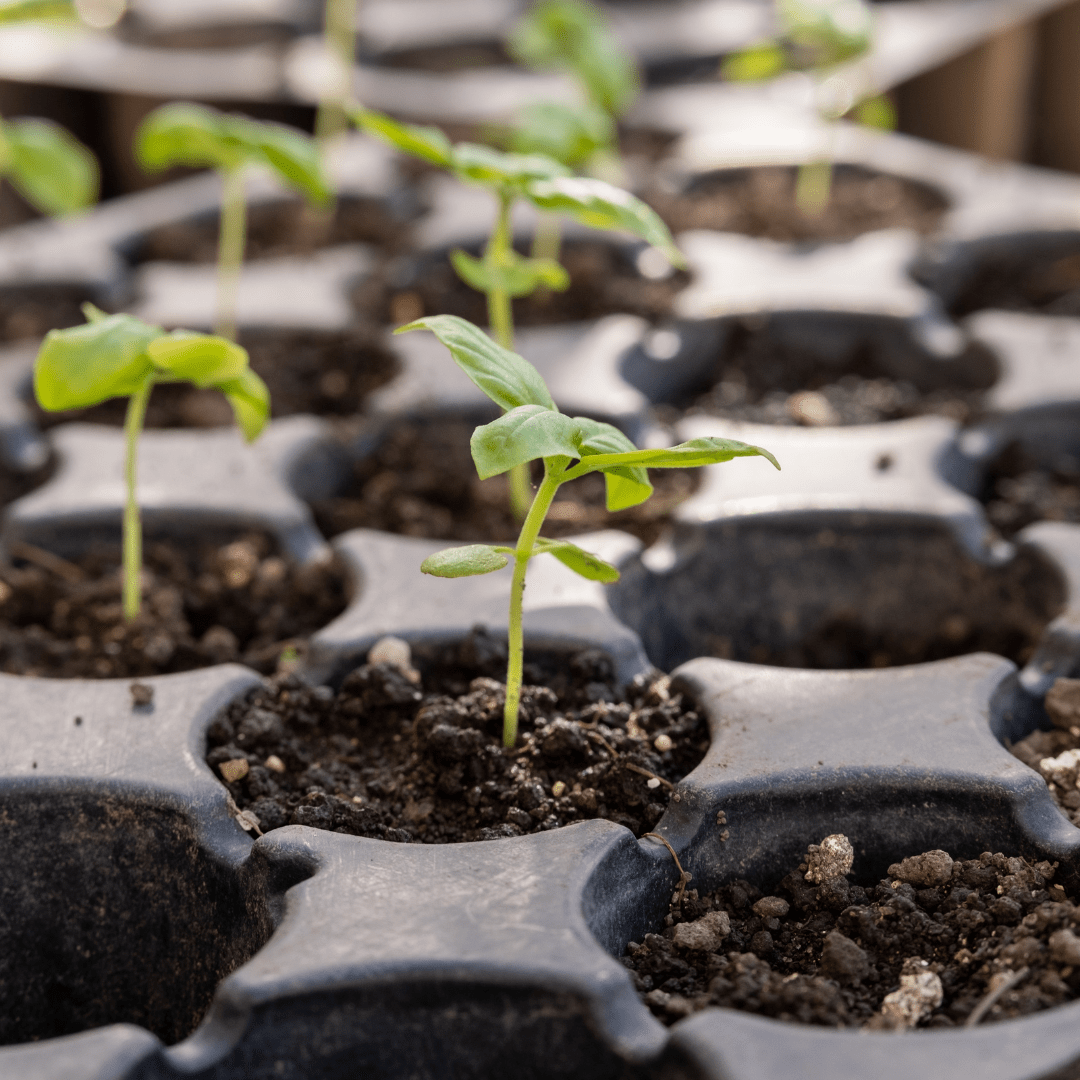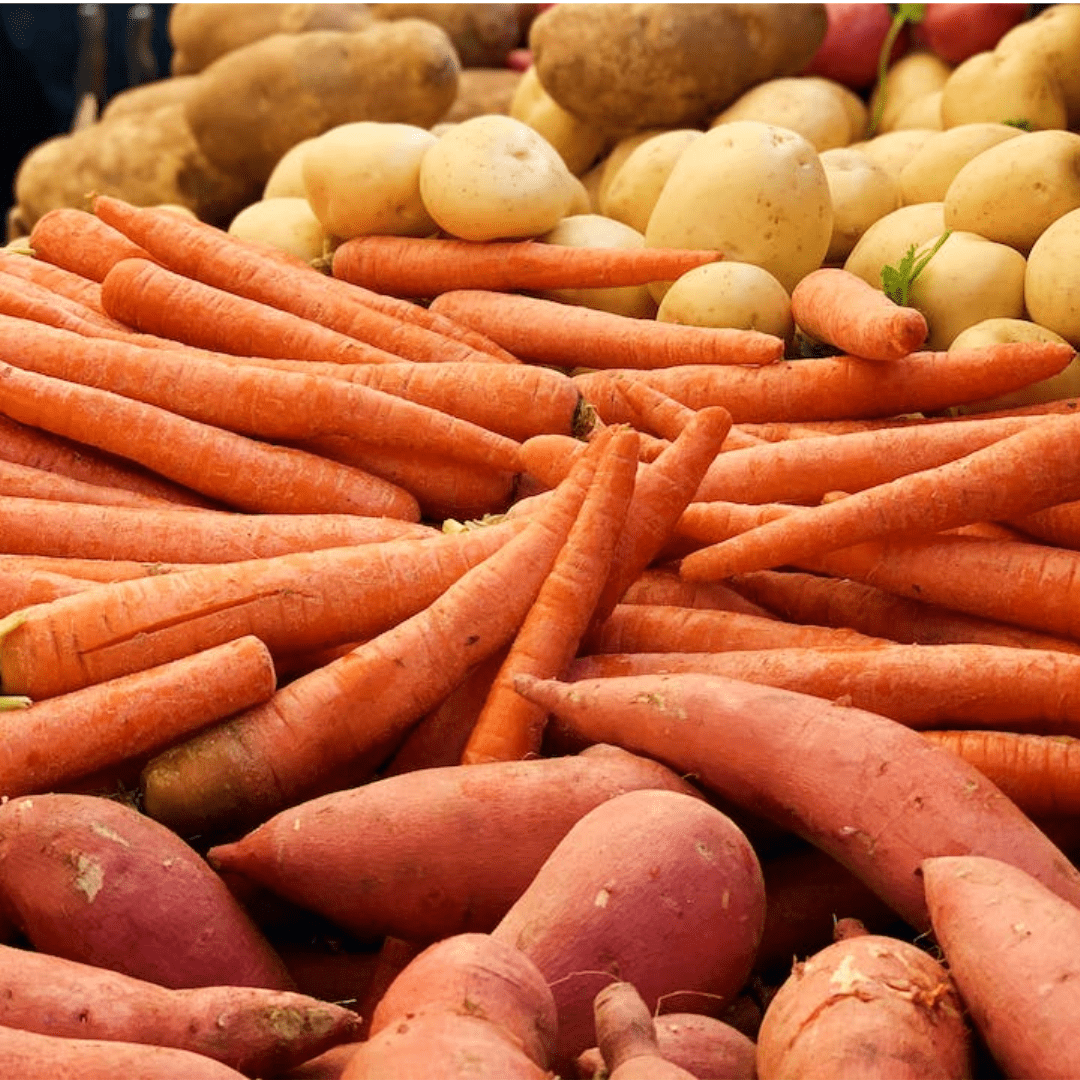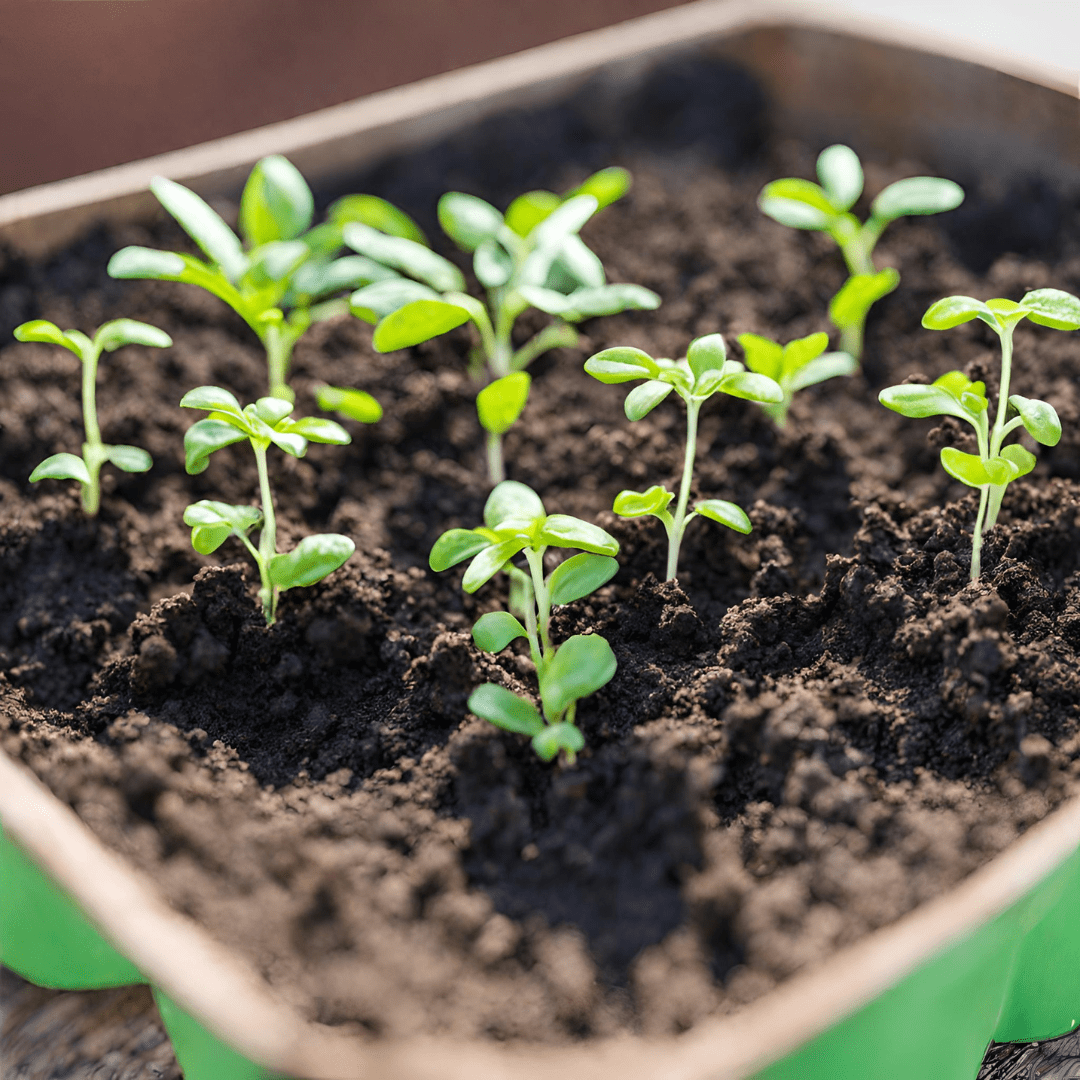Temperature fluctuations and winter sowing.
What Is Included in This Post:
- Introduction: Understanding Temperature Fluctuations and Their Impact on Winter Sowing
- Importance of Winter Sowing and its Benefits for Gardeners
- Factors Affecting Temperature Fluctuations in Winter
- Strategies to Protect Winter-Sown Plants from Extreme Temperatures
- Choosing the Right Plants for Winter Sowing: Cold-Tolerant Varieties
- Monitoring and Managing Temperature Fluctuations in Winter Gardens
- Winter Sowing Techniques for Different Climate Zones
- Conclusion: Maximizing Success in Winter Sowing Through Temperature Management
- Frequently Asked Questions
Temperature fluctuations play a crucial role in winter sowing, a gardening technique that allows seeds to be sown outdoors during the colder months. As gardeners, it is essential to comprehend the relationship between temperature variations and the success of winter sowing. This article aims to explore the significance of temperature fluctuations in winter sowing and provide valuable insights into strategies for optimizing plant growth and protecting winter-sown plants against extreme temperatures. By understanding and managing temperature fluctuations effectively, gardeners can extend the growing season, save on costs, and achieve successful outcomes in their winter gardens.
This is a pinnable post. Tap or hover over any image in this post to pin to your Pinterest Boards.

Introduction: Understanding Temperature Fluctuations and Their Impact on Winter Sowing
What is Winter Sowing?
Winter sowing is like the gardening equivalent of a magic trick. Instead of starting your seeds indoors or waiting for spring to arrive, you sow them outdoors in the winter. It may sound counterintuitive, but this method takes advantage of temperature fluctuations to give your plants a head start.
The Role of Temperature Fluctuations in Winter Sowing
Temperature fluctuations play a crucial role in winter sowing. As the temperatures rise and fall, they trigger a natural process called stratification, where the seed goes through a period of cold temperature exposure. This stratification breaks the seed’s dormancy and prepares it for germination once the conditions are right in spring. So, when the temperatures fluctuate during winter, it’s like nature’s way of waking up your seeds from their slumber.
Importance of Winter Sowing and its Benefits for Gardeners
Extending the Growing Season with Winter Sowing
If you’re tired of waiting for the last frost to pass before you can start planting, winter sowing is a game-changer. By sowing seeds in winter, you give your plants a head start, which means an extended growing season.
Cost Savings and Environmental Benefits of Winter Sowing
Winter sowing isn’t just great for your plants; it’s also a win for your wallet and the environment. By sowing seeds directly outdoors, you bypass the need for expensive grow lights, heating mats, and other indoor gardening equipment. Plus, you’ll use fewer plastic pots and trays, reducing your environmental footprint. So, winter sowing is a win-win for both your garden and your bank account.
Factors Affecting Temperature Fluctuations in Winter
Understanding Local Climate Patterns and Microclimates
Winter can be a whimsical season. While the weather report might say one thing, your garden might have other plans. Understanding your local climate patterns is key to successful winter sowing. Pay attention to microclimates in your garden, which are small areas that can have different temperature variations. These microclimates can be affected by factors like sun exposure, wind patterns, and proximity to structures.
Influence of Elevation and Geographical Location on Temperature Variations
Living on a hill has its perks, including a nice view and increased temperature variations. Elevation plays a role in temperature fluctuations, so if you’re higher up, you might experience colder temperatures than your lowland friends. Additionally, geographical location can impact temperature variations. Those living in northern regions will have more extreme cold temperatures, while those in milder climates may experience fewer fluctuations.
Strategies to Protect Winter-Sown Plants from Extreme Temperatures
Utilizing Protective Coverings and Mulching Techniques
Think of protective coverings as cozy blankets for your plants. When extremely cold temperatures hit, you can shield your winter-sown plants with row covers, cloches, or even repurposed containers. Mulching is another handy trick to keep your plants snug. Adding a layer of organic mulch around the base of your plants helps insulate the soil and regulate temperature fluctuations.
Creating Microclimates and Windbreaks
Just like we enjoy finding shelter on a windy day, your plants will thank you for creating microclimates and windbreaks. Strategic placement of fences, walls, or even carefully planted shrubs can provide protection from harsh winds. By creating these barriers, you can create a mini oasis for your winter-sown plants, shielding them from intense temperature fluctuations and gusts of wind.
Choosing the Right Plants for Winter Sowing: Cold-Tolerant Varieties
When it comes to winter sowing, selecting the right plants is crucial for success. You want varieties that can handle the chilly temperatures and not wither away at the first sign of frost. These are what we call cold-tolerant plants, and they are the superheroes of the garden world.
I have written separate posts focusing solely on the types of winter vegetables you can winter sow for success.
Root Vegetables That Thrive in Winter Sowing: Ultimate List
How to Grow Cold Hardy Greens for Winter Sowing
Top Winter-Sowing Vegetables for a Head Start in the Garden
Identifying Winter-Hardy Plant Species
Winter-hardy plants are like the action heroes of the plant kingdom – they can thrive even in the coldest of conditions. Look for plants that have a high tolerance for low temperatures and can withstand a bit of snow and ice without complaining.
Best Plant Choices for Different Regions and Climates
Just like people, plants have their preferences when it comes to where they like to live. Some plants are perfectly content in regions with milder winters, while others are built to survive the harshest of climates. It’s important to choose plants that are well-suited for your specific region and climate. For example, if you live in a mild winter climate, you can consider planting herbs like rosemary and thyme, as well as cool-season vegetables like carrots and radishes. On the other hand, if you brave the freezing temperatures of a harsh winter climate, opt for cold-loving vegetables such as Brussels sprouts and winter squash.
Monitoring and Managing Temperature Fluctuations in Winter Gardens
Winter is notorious for its unpredictable temperature swings, which can make life a bit challenging for both plants and gardeners. However, with the right tools and a little vigilance, you can keep your winter garden on an even keel.
Temperature Monitoring Tools and Techniques
To stay on top of temperature fluctuations, invest in a good thermometer. A digital one is a handy choice as it provides accurate readings and can even record the lowest and highest temperatures of the day. Additionally, keep an eye on the weather forecast, as it can give you a heads-up on any extreme weather conditions that may be headed your way.
Adjusting Plant Care Based on Temperature Changes
When the mercury starts to dip, it’s time to take action. If you have potted plants, consider moving them to a more sheltered spot, like a porch or an unheated garage. For plants in the ground, you can offer them a cozy blanket of mulch to help insulate their roots. And if an unexpected heatwave strikes, provide some shade to prevent your plants from wilting. Remember, plants may be hardy, but they still appreciate a little extra care during temperature fluctuations.
Also, don’t forget to wrap up your clear plastic containers with your seeds in them with bubble wrap for added warmth and put them in a cool garage when temperatures spike up to prevent early germination that would otherwise be killed in the next frost.
Winter Sowing Techniques for Different Climate Zones
Winter sowing techniques may vary depending on which climate zone you find yourself in. Let’s take a look at what works best in two different scenarios: mild winter climates and harsh, cold winter climates.
Winter Sowing in Mild Winter Climates
In regions with mild winters, you can get a head start on your winter sowing by starting seeds indoors and then transplanting them outdoors once the weather warms up. This way, your plants will have a jump in the growing season and will be ready to flourish when the time is right.
Winter Sowing in Harsh and Cold Winter Climates
For those living in regions with chilly winters, winter sowing directly in the ground can be a viable option. By sowing seeds in protective containers, such as milk jugs or mini-greenhouses, you provide them with a cozy environment to germinate and grow. Once spring arrives, you can transfer these tough little seedlings to their permanent outdoor homes.
Conclusion: Maximizing Success in Winter Sowing Through Temperature Management
Temperature fluctuations can be a roller coaster ride for both gardeners and plants. By choosing cold-tolerant plant varieties, closely monitoring temperature changes, and adjusting plant care accordingly, you can maximize your success in winter sowing. Remember, a little extra attention during the winter months can yield bountiful results when spring finally arrives.
In conclusion, temperature management is a key factor in achieving success with winter sowing. By understanding the impact of temperature fluctuations and implementing appropriate strategies, gardeners can create optimal conditions for their winter gardens. From choosing cold-tolerant plant varieties to employing protective coverings and monitoring temperature changes, careful temperature management enhances the chances of successful winter sowing. By embracing these techniques and adapting them to specific climate zones, gardeners can enjoy extended growing seasons and bountiful winter gardens. So, go ahead, and embrace the challenges and rewards of winter sowing, armed with the knowledge to conquer temperature fluctuations and create thriving winter gardens.

Frequently Asked Questions
1. Can I sow seeds directly in the ground during winter?
Winter sowing typically involves sowing seeds outdoors during the colder months. However, it is essential to consider the local climate and temperature fluctuations. In regions with harsh winters, it is advisable to use protective measures, such as cold frames or mini-greenhouses, to provide extra insulation and protection for the seeds.
2. How do I protect winter-sown plants from extreme temperature fluctuations?
To protect winter-sown plants from extreme temperature fluctuations, various strategies can be implemented. These include using protective coverings like row covers, cloches, or frost blankets, which help trap heat and create a more stable microclimate around the plants. Mulching the soil can also provide insulation and regulate temperatures. Additionally, positioning plants near structures or using windbreaks can shield them from cold winds.
3. What plants are suitable for winter sowing?
Many cold-tolerant plant varieties are suitable for winter sowing, including vegetables like kale, spinach, and winter lettuces, as well as hardy annual flowers like pansies and snapdragons. It is essential to choose plant species that are adapted to your specific climate and capable of withstanding the temperature fluctuations experienced during the winter months.
4. How often should I monitor temperature fluctuations in my winter garden?
Regular monitoring of temperature fluctuations is crucial for successful winter gardening. It is recommended to check temperatures daily, especially during extreme weather conditions, using thermometers or electronic temperature sensors. By staying vigilant and monitoring temperature changes, you can adjust protective measures accordingly and ensure the optimal growth and health of your winter-sown plants.
Summary
I hope I have inspired you to try your skills at winter sowing with these tips and products.
If you were encouraged by this post, I invite you to check out my FREE Printables Page for fun free printables, planners, and charts.
ENTER MY FREE Printables Page HERE
Here are some more of my winter gardening inspiration posts to check out!
Top Common Problems and Solutions in Winter Sowing: Ultimate Guide
Winter Magic Unveiled: Boost Your Plants’ Growth With Perfect Timing
When to Start Planting Vegetables in Winter: The Ultimate Guide
Winter Sowing: How to Decide If It’s Right for Your Garden
How to Build Mini Greenhouses for Winter Sowing
How to Repurpose Everyday Items into Winter Sowing Containers
Root Vegetables That Thrive in Winter Sowing: Ultimate List
How to Grow Cold Hardy Greens for Winter Sowing
Top Winter-Sowing Vegetables for a Head Start in the Garden
Getting Started with Winter Sowing: The Ultimate Guide
The Benefits of Successful Winter Sowing for Vegetables in Containers
The Ultimate Guide to Choosing the Best Soil for Winter Sowing
Planning Your Garden: How to Plan a Vegetable Garden: Expert Green Thumb Tips!
Winterizing the Garden: How to Winterize Your Vegetable Garden: Step-by-Step Checklist
Mulching the Garden: How to Make Leaf Litter Mulch
How to Grow a Fall Garden: 9 Best Fall Crops
Blessings,
The Off Grid Barefoot Girl





